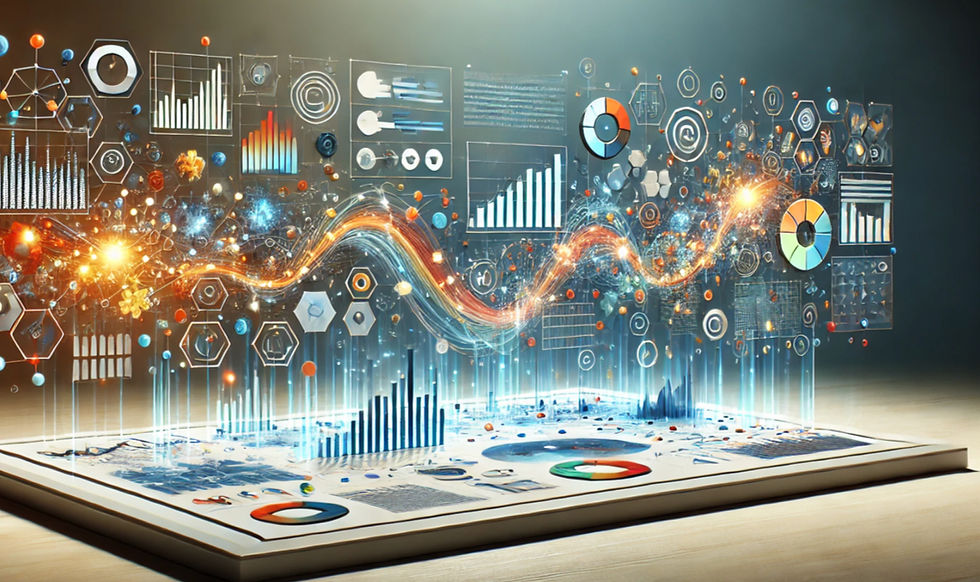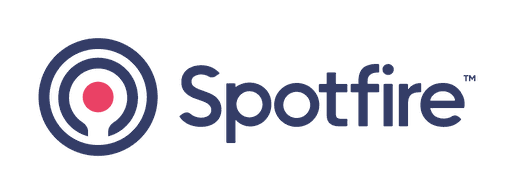Tableau Data Visualization AI Tool
- AI Improve Tools
- 7 days ago
- 6 min read
Updated: 6 days ago
In today's data-driven world, the ability to transform complex datasets into clear visuals is crucial for businesses. Organizations are overwhelmed with vast amounts of data, and the real challenge lies in turning this information into actionable insights. Enter Tableau, the leading data visualization tool that has integrated artificial intelligence (AI) to boost its functionality. This integration makes it easier for users to extract meaningful insights from their data.

In this blog post, we will explore the features, benefits, and applications of the Tableau Data Visualization AI Tool, offering a thorough overview for those eager to make the most of this powerful resource.
Understanding Tableau and Its Importance
Tableau is a user-friendly data visualization tool that enables users to create interactive and shareable dashboards. It connects seamlessly to various data sources, allowing users to analyze and present data visually. The significance of Tableau lies in its capacity to simplify complex datasets, making them accessible to users regardless of their technical skills.
With the surge of big data, organizations need effective tools to make sense of the information available. Tableau’s intuitive interface enables users to explore data visually, identify trends, and make informed, data-driven decisions. The integration of AI into Tableau enhances its capabilities, offering powerful analytical tools to automate tasks and improve accuracy. A survey showed that 70% of users found Tableau significantly improved their data analysis process, allowing them to make quicker and more informed decisions.
The Role of AI in Data Visualization
Artificial intelligence has changed many industries, including data visualization. AI tools can analyze large datasets at incredible speeds, identify hidden patterns, and generate insights that human analysts might overlook. Within Tableau, AI streamlines the data visualization process by automating repetitive tasks, offering predictive analytics, and providing intelligent recommendations.
One major advantage of incorporating AI into Tableau is the ability to perform advanced analytics without needing extensive programming skills. Users can take advantage of AI-driven features to extract insights quickly, allowing them to focus more on interpreting results and less on the technical details.
Key Features of Tableau Data Visualization AI Tool
1. Smart Data Preparation
A standout feature of Tableau's AI is smart data preparation. This tool automates data cleaning and organization, which means users can spend less time on data wrangling and more on meaningful analysis. Using machine learning algorithms, Tableau identifies and corrects data quality issues. For instance, users reported a 40% reduction in time spent preparing data, greatly enhancing their workflow.
2. Natural Language Processing (NLP)
Tableau’s natural language processing allows users to interact with their data using everyday language. For example, a user can ask, “How did sales perform last quarter?” and Tableau will generate relevant visualizations. This feature opens up data analysis to non-technical users, promoting a more inclusive data-driven culture within organizations.
3. Predictive Analytics
Predictive analytics is a powerful component of Tableau's AI capabilities. By analyzing historical data, Tableau can forecast future trends and outcomes. A practical application is in retail, where businesses can anticipate sales patterns, allowing them to adjust inventory levels and marketing strategies accordingly.
4. Automated Insights
Tableau's automated insights feature highlights significant trends and anomalies within datasets. This functionality saves users considerable time by pinpointing key findings, enabling them to focus on strategic decision-making. For instance, one retailer was able to identify a 25% increase in sales for a product line within weeks, facilitating prompt marketing adjustments.
5. Enhanced Collaboration
Collaboration plays a vital role in data-driven environments. Tableau supports this by allowing users to create shared dashboards and reports. Team members can comment and discuss insights directly within the platform, enhancing communication and aligning team goals. Research shows that organizations leveraging collaborative tools report a 30% increase in overall productivity.

Benefits of Using Tableau Data Visualization AI Tool
1. Improved Decision-Making
The primary advantage of using Tableau's AI tool is better decision-making. By providing advanced analytics and insightful visualizations, organizations can make data-driven decisions rooted in solid evidence—leading to more effective strategies and better outcomes.
2. Increased Efficiency
Thanks to features like smart data preparation and automated insights, Tableau enhances efficiency in data analysis. Users can devote less time to manual tasks and concentrate on interpreting results, resulting in faster report generation. Some organizations have reported turnaround time reductions of up to 50%.
3. Accessibility for All Users
Tableau's easy-to-navigate interface and natural language processing capabilities make it accessible to users at all skill levels. This democratization of data analysis empowers more employees to engage with data, cultivating a culture where decisions are made based on solid insights.
4. Scalability
As businesses expand, so do their data requirements. Tableau's AI tool is designed to scale, accommodating larger datasets and intricate analyses without sacrificing speed. This ensures that organizations can adapt as their data needs evolve over time.
5. Enhanced Data Quality
Tableau improves data quality through automated data preparation and quality checks, decreasing the risk of errors. This accuracy leads to more reliable insights, resulting in better decision-making across all levels of an organization.
Use Cases for Tableau Data Visualization AI Tool
1. Marketing Analytics
In the marketing sector, Tableau's AI tool helps analyze customer behavior, campaign effectiveness, and market trends. By visualizing this data, marketers can pinpoint successful strategies and areas that need improvement, resulting in more effective campaigns. For example, a skincare brand used Tableau to enhance email marketing campaigns, leading to a 60% increase in engagement rates.
2. Financial Analysis
Financial analysts leverage Tableau to visualize financial performance, key metrics, and predict future trends. An example of this is in budgeting—organizations can utilize historical financial data to make informed budgetary decisions, which can lead to cost savings of 20% or more.
3. Healthcare Insights
In healthcare, Tableau can analyze patient data and treatment outcomes. For instance, hospitals use Tableau to visualize patient flow and resource allocation, enhancing their ability to provide quality care while optimizing costs.
4. Supply Chain Management
Tableau's AI tool optimizes supply chain operations by visualizing inventory levels and supplier performance. By identifying bottlenecks and inefficiencies, organizations can improve their supply chain processes, potentially reducing costs by up to 15%.
5. Human Resources Analytics
HR professionals use Tableau to analyze employee data and track performance metrics. This visualization helps organizations make data-driven decisions on recruitment and employee turnover, with some companies reporting a 30% increase in retention after implementing data analytics.
Getting Started with Tableau Data Visualization AI Tool
1. Setting Up Tableau
To begin, users should download and install Tableau. The software offers a free trial version, enabling users to explore its features before purchasing. After installation, users can connect to various data sources—ranging from spreadsheets to cloud services.
2. Exploring the Interface
Getting familiar with Tableau's user-friendly interface is crucial for effective use. The main components include the data pane, worksheet, and dashboard. Users can drag and drop data fields to create visualizations, customize charts, and build interactive dashboards.
3. Utilizing AI Features
To maximize Tableau's AI capabilities, users should explore features like natural language processing and automated insights. By asking straightforward questions, users can quickly create visualizations and uncover key findings.
4. Sharing Insights
After completing analyses, users can easily share their dashboards and reports with team members. Tableau encourages collaboration, allowing users to comment and discuss insights on the platform for improved teamwork.
5. Continuous Learning
Tableau provides a wealth of resources for users eager to improve their skills. From online tutorials to community forums, users can access various materials to stay updated on the latest features and best practices.
Final Thoughts
The Tableau Data Visualization AI Tool marks a significant step forward in data analysis and visualization. By integrating AI capabilities, Tableau empowers users to transform complex datasets into actionable insights effortlessly. Features like smart data preparation, natural language processing, and predictive analytics enhance the data analysis process, making it user-friendly for all skill levels.
As businesses navigate the challenges of big data, utilizing tools like Tableau is crucial for informed decision-making and success. By embracing the dual power of data visualization and AI, companies can unveil new opportunities and maintain a competitive edge. In a world dominated by data, effectively visualizing and interpreting that data is invaluable. Tableau’s AI tool not only simplifies the analysis process but also enhances the quality of insights derived from data, making it an essential resource for any organization aiming to thrive in the digital landscape.






Comments